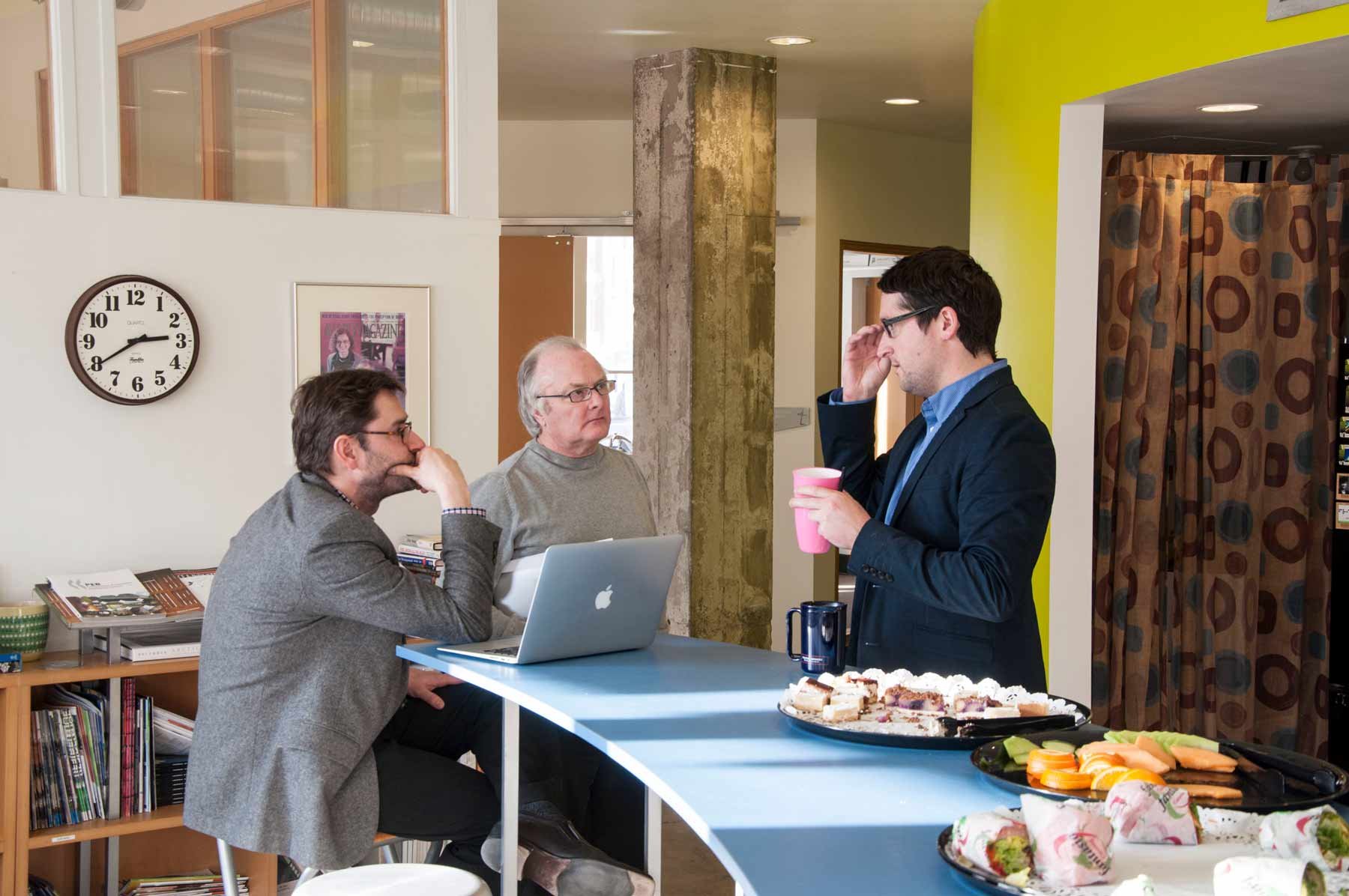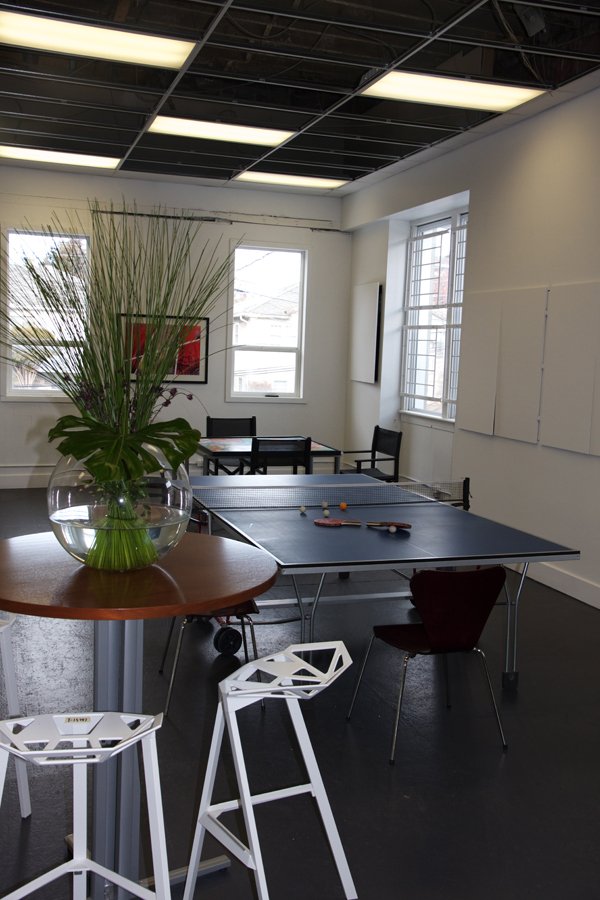Enhancing Creativity and Collaboration Through Design
If someone asked you to list the first five images that come to your mind when you hear the words “office design,” what would they be? Cubicles? Desks? Water coolers? Fluorescent lights?
The way that we work has changed dramatically over the past two decades. Advancements in computing, communication and networking tools enable us to work in ways that were never before possible. Today, we take for granted our ability to open Skype and meet with colleagues and clients who may be hundreds of miles away. Working from home, and working on-the-go have become expected conveniences within modern definitions of work.
However, rows of cubicles and roller chairs still dominate most corporate workspaces and new processes of work styles are being crammed into old spaces that weren’t designed for them. What is the design community’s response to the need to update our corporate landscape?
Activity Based Working (ABW) is a radical response to the rank and file cubicle grid that has dominated the office landscape since the dawn of the desk. Fundamentally, ABW uses hybrid spaces, or “third spaces,” which enhance a team’s ability to create and collaborate. Instead of forcing employees into small little boxes, ABW focuses on creating spaces that reflect how people will use them. Consequently, every office’s unique workflow dictates the final form.
This groundbreaking approach has captured the interest of Edmonton-based design firm Manasc Isaac. We are keen on introducing ABW to today’s workforce, because we believe in designing offices for how people work.
Activity Based Working all begins with the three Cs of space: chatter, concentration and collaboration
Chatter Space
Chatter spaces have always been present in the workplace. The ubiquitous water cooler is more than a cliché; it represents a location where people from all over the office can bump into one another randomly. It is a symbol of casual conversation.
Fun, lively and informal, Activity Based Working takes advantage of these under-utilized spaces. The casual vibe that they embody encourages team building and provides endless opportunities for cross-pollination and collaboration between staff. In our designs, these areas have been remarkably successful at bringing about connections.
When renovating Servus Credit Union’s Corporate Centre, we integrated a feature staircase that connects the building’s three floors. Designed to create collisions between people who may not otherwise see each other, the staircase allows both people and ideas to flow freely between floors and departments! These underestimated areas form a great base for enhanced collaboration in an office.
Collaboration Space
Where is the best place to hold a meeting in an office? If the only answer you could think of is a boardroom, think again. A growing trend and vital component of ABW is the addition of multiple casual meeting areas within an office. These spaces come in a wide variety of sizes, shapes, privacy levels and moods. However, all offer a focused space where team members can sit down and share conversation.
Recently, we touched base with Alexandra Hatcher, Executive Director of the Alberta Museums Association. We designed an office for her organization two years ago and wanted to see if our ABW techniques were worth the investment. The most persistent feedback we received confirmed how valuable these informal collaboration spaces are in creating a vibrant work environment.
“People gravitate toward these informal areas,” Hatcher said.
“It helps them get into a different headspace and makes for a different kind of meeting. The design has improved both productivity and collaboration for our team.”
At the Manasc Isaac studio, our coffee bar is a popular meeting spot. Featuring enough stools for a project team, collaborations and conversations to pop up all throughout the working day. The ease and energy of the space is so apparent that one of our clients upon seeing it in action requested that we plan a similar space for their new executive headquarters.
These spaces show that formal boardrooms filled with roller chairs and smart boards aren’t designed for optimal collaboration. By keeping the mood light, these coffee bars, nooks and seating areas facilitate collaboration and creativity.
At reimagine interiors, a meeting might be followed with a game of ping-pong!
Concentration Space
Anyone employed in today’s rapidly paced world knows that sometimes you need to be alone to get the job done. As dynamic as the results from chatter and concentration spaces can be, peace and privacy are just as important. Concentration spaces are quiet areas where team members can retreat and synthesize the ideas and energy brought about in the collaborative environment.
Traditional office design not only undervalues opportunities for collaboration, but it is also inherently wasteful. In most offices at any given moment through the workday, less than half of the desks are occupied. This doesn’t make sense in an era of austerity, where rents are high and sustainability challenges are a constant concern.
Depending on your organization’s workflow, you may wish to employ techniques such as hot desks - workstations that are shared by multiple people at different times. These spaces have come in particularly handy in our Calgary studio. Although we don’t have dedicated desks, members of our team can choose where they wish to work (based on what they will be working on) each day. This flexibility allows us to maximize our use of space.
The technique also reduces churn, the amount of resources it takes to move a person’s office from one location within the building to another. Churn is disruptive and expensive, and by freeing ourselves from dedicated desks we can eschew the problem almost entirely.
Embracing Activity Based Working is an affirmation of happy accidents, collaboration and creativity. By creating spaces that mirror the behaviours and needs of the people who use them, we create environments that positively impact the way we work, live and play.
Please join our ongoing exploration of Activity Based Working at manascisaac.com and reimagineinteriors.ca
Related Articles
AVOIDING THE WET BLANKET IN CREATIVE COLLABORATION
DAN PINK ON HOW TO SUPPORT INNOVATION AND CREATIVITY IN THE WORKPLACE





